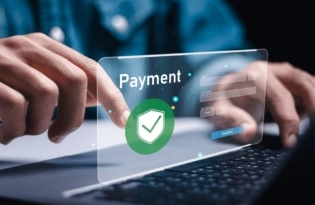What are invoices and why do you need them in business?
Every business owner needs to issue invoices. Learn what an invoice is, what you need to include on your invoices, and when you need to send them, and why tracking invoices is important for your business’ success.

In the world of business, learning the ins and outs of accounting and invoicing is critical to succeed. Understanding this space is the basis for making sure you are paid from clients on time, at the right rates, and reporting your income accurately to your accountant or the authorities.
In this guide, we’ll dive into the world of invoicing and understand what an invoice is, look at some examples, understand why it’s important, and more.
What is an invoice?
An invoice is an accounting document that a seller provides to a buyer. It lists the services or goods that were delivered and the total cost to be paid. The ultimate point of an invoice is to notify the buyer that they need to pay for the services given. This is relevant for both B2B and B2C sales.
An invoice is typically issued after services or goods are delivered but before payment is made. This is the main difference between an invoice and a receipt. With that said, different countries and business models have different regulations and it’s always important to check which accounting documents you are required to issue and at what point of the sales process.
What is typically included on an invoice?
Depending on the business, there can be a wide range of elements included in an invoice. We’ve listed some of the most commonly found elements below:
- Invoice header: This includes the business name, address, contact information, invoice number, tax ID, website, and date
- Customer information: The customer’s name and contact information
- Description of the products or services: This section provides a detailed description of the goods or services provided, as well as the quantity, unit price, and total price for each item
- Total amount due: This is the entire amount owed for all goods on the invoice, including any taxes or discounts
- Payment terms: The company’s payment conditions for goods and services
- Late payment fees: Any fees or penalties imposed for late payments
- Additional information: This includes shipping and handling fees, terms and conditions, and special instructions
What are the different types of invoices?
Preventing payment fraud is a critical aspect of protecting businesses from financial losses and reputational damage. Here are our top recommendations for how to protect yourself from fraud:
- Retail store invoice: Details items, prices, taxes, and discounts. This type of invoice is used by direct-sales businesses including clothing, electronics, and food retailers.
- Proforma invoice: A customer gets a proforma invoice before a transaction. It describes, prices, and accepts payments. Foreign purchasers use proforma invoices for financing, letters of credit, and customs. Global exporters utilize this type of invoice as well.
- Commercial invoice: International commerce companies use commercial invoices to describe, value, and transport products. It must be shown to the importing country’s customs officers to establish customs duties and taxes.
- Recurring invoice: This type of invoice is used monthly or annually for subscribers. It is generated automatically in most cases and provides the same information as an invoice. Maintenance and subscription services use recurring invoices.
- Credit invoice: A consumer receives a credit invoice when they return products or services or when an account adjustment is necessary.
- Debit invoice: This type of invoice is sent to a consumer when further charges are needed. It adds a positive sum to the invoice.
- Timesheet invoice: This invoice is based on employee or contractor hours. Hours worked, pay rate and total due are included. Freelancers and consultants use timesheet invoices to track hours and charge customers.
- Prepayment invoice: This invoice requests payment before a service or product is supplied. Web design firms and wedding planners use prepayment invoices to record transactions and seek payment.
How does invoicing help different types of businesses?
Different types of businesses may use invoices for different reasons. Here are some examples:
- Freelance or independent contractors charge customers for project work. They usually use proforma or standard invoices that detail the services, payment conditions, and directions.
- Small business owners use different invoices based on their requirements. For example, a retail shop owner uses a retail store invoice to charge consumers, whereas a service firm uses a timesheet invoice to log billable hours.
- Large corporations use commercial invoices for international trade, recurring invoices for regular payments, and debit or credit invoices for invoice changes.
- Ecommerce companies and marketplaces use various invoices depending on their payment methods and platforms. Companies use commercial invoices for cross-border transactions and prepayment invoices for advance payments.
How to create an invoice
The easiest way to create an invoice is to use dedicated software that is approved for use in your country. When using software, all you need to do is add in the relevant information including contact details, services or goods provided, pricing, etc., without having to deal with creating a format or design.
Once you’ve sent your invoice, it’s important to track which invoices have been paid, and which are still outstanding. When using invoicing software, this should be done automatically.
Frequently asked questions
This depends on the type of business and the accounting regulations in your country. Regardless of if invoices are required are not, it is highly recommended to use them to remain organized.
Yes! You can easily request payment from customers using Payoneer and create an invoice using our free invoice builder (if you choose).
Invoice fraud is when fraudsters create or change invoices in order to make people pay for goods and services which they never received. This is why it is critical to check all invoices before sending and before payment.
Related resources
Latest articles
-
A guide to starting a business in Estonia as a non-citizen
If you’ve thought about opening a new business somewhere with plenty of government support, expanding your business into the EU, or making it easier to work as a contractor or digital nomad anywhere in the European Economic Area (EEA), you should think about starting a business in Estonia…
-
How to simplify payment operations with Payoneer’s automation feature
Save time, reduce costs, and eliminate errors with Payoneer’s new payment automation feature.
-
How to prevent online payment fraud as an SMB
Prevent online payment fraud by overcoming challenges like phishing, fake accounts, and account takeovers (ATO) with enhanced security features from Payoneer.
-
Amazon Fees & Policy Updates 2024
Amazon regularly makes planned updates to fees and policies that may impact Payoneer customers that sell on Amazon. To keep Payoneer customers informed regarding upcoming and past updates, we’re providing a list of known changes to Amazon fees and Policy updates.
-
How Payoneer’s target exchange rate feature will help you save more on bank withdrawals
Boost savings with Payoneer’s target exchange rate feature.
-
Navigating phishing attacks: A guide to keeping your Payoneer account secure
Keeping your funds safe is our number one priority at Payoneer. While phishing attempts can happen, arming yourself with knowledge is key to keeping your data and money safe














